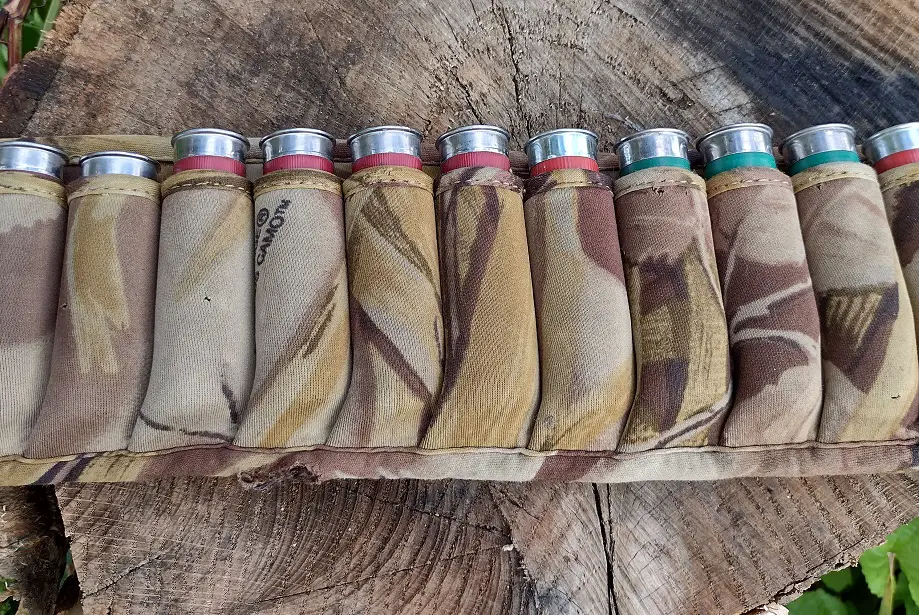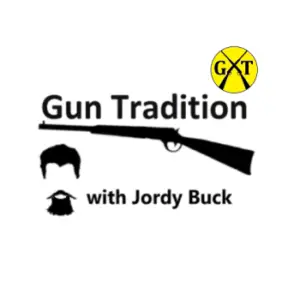I pattern my shotgun every year before hunting season. It’s both tradition, and essential for success in the field.
Shotguns are patterned to determine the pattern of a particular cartridge out of a particular barrel and choke combination. Identifying ammo with the best pattern for your gun and hunting distance is essential if you want a successful hunt.
Your ideal pattern depends of the target you are shooting, the distance to the target, and the gauge of shotgun.

How to Pattern Your Shotgun
Shotguns need to be patterned the first time you use them, and any time you chance ammo, barrels, or choke tubes. It’s also a god idea to pattern periodically, just to keep up with things. Patterning is simple and take just a few minutes.
The general idea of patterning is to see how many pellets hit in a 30-inch circle at normal shooting distances. You will need a large paper or cardboard target, you gun, and some shotshells. It’s a good idea to have an assortment shells in order to find one that works best.
The standard starting distance for patterning a shotgun is 25 yards. For most shotguns, that’s the average distance they will be shot at. Even skeet and trap guns are patterned at 20 to 25 yards. You also need to determine your maximum kill range, which depends greatly on shotgun gauge.
I guarantee you my dad’s 12-gauge with a magnum 3 ½ inch chamber will drop ducks further than my old 12- gauge 2 ¾ inch chamber and both will function much further than his .410.
By patterning, then increasing distance with subsequent shots, you will figure out just how far you can shoot with minimal risk of wounding an animal. Hunters should respect game enough to take every opportunity to ensure a clean kill on an animal.
In more detail, start by purchasing two or three different types of shotshells suitable for the game you are hunting. If you are unsure what ammo is applicable, ask at your gun store or a shooter you know. You’ll also need to get a big cardboard box or large sheets of paper (at least 30 inches) and something to hold it up. You can also buy a shotgun patterning target.
It helps to have a marker or pen with a 15-inch tail of string tied on it (so you can draw a perfect circle with it). Measure out a distance of 25 yards (75 feet). You can us a rangefinder or a 25-foot tape measure (measuring in 3 sections). Use a marker, paint, or colored tape to put a 4-inch dot in the middle of the target.
When you’re ready, load up a shell and fire it, aiming for the dot. Fire only once! Make sure the gun is unloaded, and go check your target. Using the pen and string, make a perfect circle around the dot on your target using the whole 15-inch string. That’s your 30inch circle, the kill area.
What you are trying to get here is a good even spread of shot, with no open spaces. For most small game, a failure would be is any spot on the target has an area the size of a baseball without holes in it. If you are patterning buckshot for large game, you’ll be looking for a different pattern.

Patterning a 12-Gauge Shotgun
A 12-gauge shotgun should be patterned at 25 yards as a starting point. Increase distance by 5 yards until there are baseball-sized misses for small game, and Volleyball sized misses (8-inches) for buckshot with large game. The pattern should be 80 percent or more in a 30-inch circle at all times.
Most 12-gauge shotguns are capable of shooting practical patterns up to 25 yards with target loads and a cylinder choke, 35 yards with game loads and a modified choke, and 45 yards with good buckshot on a full or extra full choke. There is a big variance in chokes.
Choke is extra constriction in the end of a shotgun barrel to squeeze the pattern tighter. All shotguns use the same nomenclature for choke. Here are the common options from the widest to the tightest: Cylinder, Improved Cylinder, Modified, Improved Modified, Full, and Extra Full.
12 Gauge Chokes and Maximum Distances
| Choke | Diameter | Distance (Lead or tungsten shot) |
| Overbore | .735 | 20 yards |
| Cylinder | .730 | 20 yds |
| Skeet | .725 | 25 yds |
| Improved Cylinder | .720 | 30 yds |
| Light Modified | .715 | 35 yds |
| Modified | .710 | 40 yds |
| Improved Modified | .705 | 45 yds |
| Light full | .700 | 50 yds |
| Full | .695 | 55 yds |
| Extra Full | .685 | 60 yd |
| Super Full | .675 | 65 yards |
Even though you may have a full pattern, there may not be enough power at long ranges. Mileage may vary

Good Patterning Shotshells
Some shotshells will spread out quicker than others. Generally, the cheaper ones are the widest scattering. The worst I’ve seen was from Russian made shotshells from Wolf and Barnaul. They are poor past 15 yards for just about anything because they are so crudely made.
What really helps is when a shell has a shotcup. All shotgun shells have some type of wadding, a solid layer between the powder and shot. A cheap wad just pushes the shot out, then lets it scatter immediately after exiting the barrel.
A shot cup is exactly that, a cup that stays with the shot for a while. Good shells will have the shot packed inside a small plastic cup that keeps the shot together longer, making the pattern tighter. When the shot cup leaves the barrel, it holds the shot together for an additional 10 yards or so.
Shot cups usually shrink the size of the pattern by around 10 inches, which means around 12 yards more functional distance for shooters. Some shot cups have had years or research and development to make them extraordinary. Hornady’s Versatile Wad system is perhaps the best example of this.
Shells with Hornady’s Versatile Wad often produce groups half the size of normal hunting loads. I’d strongly recommend Hornady’s shotshells, especially one with the Versatile Wad. Generally, better preforming shells cost more simply because they took a lot of development and engineering.
You can get decent shotshells for a fairly low price. Some specialty shells cost over $3 each, but I pay $10-$15 for a box of 25 shells for small game hunting. They don’t usually have as much maximum killing distance, but I’m okay with that. I’ll save my money and wait for animals to get a little closer.
I say it a lot and I’ll say it again, you don’t have to pay high-dollar to go hunting. I ‘ve seen many hunters in duck swamps who wear $1,000 camouflage, shoot $1,800 shotguns and $200 duck calls. I usually have the same success with my $100 shotgun, military surplus camo, and old duck calls I bought at a garage sale.
The secret to success on the hunt is not dollars spent on the latest equipment, its, patience, skill, and persistence the woods.
How Far Will a 20-gauge Shoot?
20-gauge shotguns have a max practical range of about 30 yards with birdshot and 40 yards with buckshot. A 20-gauge sabot will work up to 100 yards. Most 20-gauge rifled slugwill work out to 75 yards.
A 20-gauge shotgun is a great choice for most uses, but it will have 25-30 percent less effective distance than a 12. It also has less recoil, so it’s a compromise. Most police departments switched out their 12 gauges for 20-gauge shotguns. They favor less recoil over more power.
How Far Will a .410 Shoot?
.410 shotguns are for targets and game under 25 yards in most instances. The low amount of shot greatly limits the distance of a good pattern. They spread a fast as a 12-gauge. A .410 slug has an effective range of 50-100 yards on medium game as long as it has over 600 ft/lbs. of energy remaining.
The issue with a .410 shotgun is it’s tiny. The bore is literally .41 caliber as opposed to a 12 gauge at 73 caliber. Because its tiny, people tend to assume it’s a great shotgun for kids. I disagree. Hard to aim, kick more than most kids should handle, and require close shots.
Most .410 shotguns will generate between 8 and 11 pounds of recoil with common loads. While that doesn’t sound like much compared to 30 pounds from a 12-gauge, it’s a lot for a kid. The US army states that 17 pounds is the threshold for most adult men. More than that and they tend to develop problematic shooting habits.
The .410 has more recoil than most young kids can comfortably practice with. Plus, most of them are full choke, making it harder to hit a rabbit. On top of that, you have to get very close to game, which can be quite a challenge for a small child.
Young children are better off with a 22lr or 22 mag for small game whenever it’s an applicable choice.
